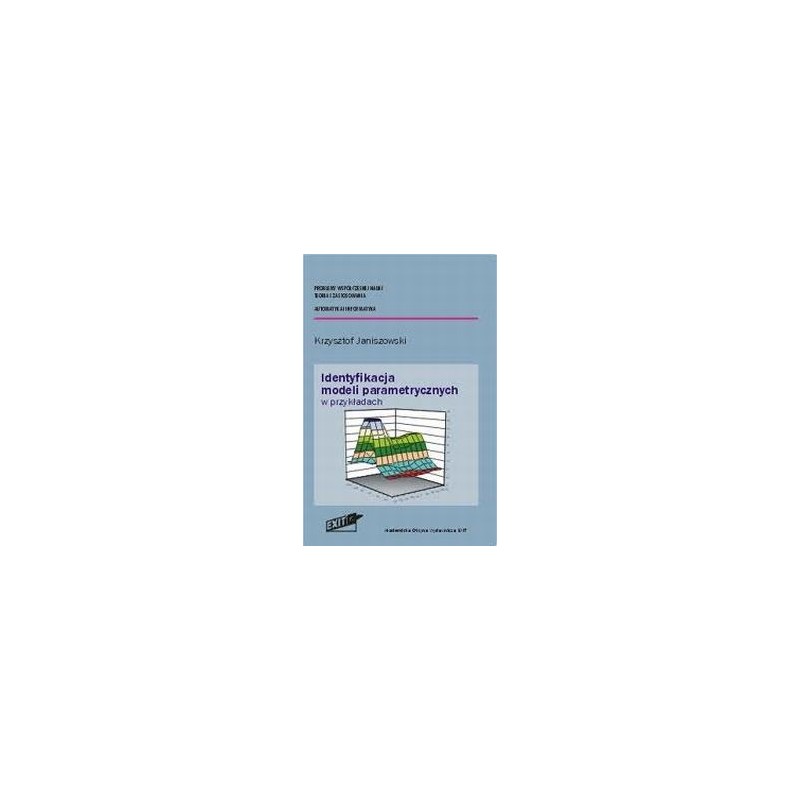- Out-of-Stock



Krzysztof Janiszowski
The book presents the possibilities of using statistical identification techniques for building models of dynamic processes. The basis of the proposed approach is the use of standard forms of parametric models to create a description for example to reproduce the signal, perform its prediction, determine the dynamic properties of the process, design the control system, etc. The range of considered models includes: simple linear structures, models parameterized with fuzzy functions, also models in the form of artificial neural networks.
The main intention of the author is to familiarize with the problems of identifying the widest possible audience, who do not necessarily have to have appropriate professional preparation. For this reason, the book's content has been divided into separate parts including:
I. Introduction to the problem of identification with the presentation of structures of applied models, applications, verification methods and basic computational aspects in the field of signal processing and estimation of models with the transfer of only basic formulas.
II. Extensive discussion of identification results carried out for two examples of simulated processes and four sets of data from real case study: evaluation of psychomotor tests of pilots, model determination for the pneumatic servo positioning algorithm design, model testing for the reproduction of the temperature signal in the superheater of the power unit and model for prediction exchange rates.
III. Instructions on the use of the IDCAD IT package (included on the floppy disk), with the help of which these models have been designated.
IV. Additions containing additions or derivations of selected dependences used in part I or II, literature and index.
Table of Contents
Preface
Part I. Signals, models and their properties
I.1. Rules for modeling and identification purposes
I.2. Signals and their properties
I.3. Description of processes and models' forms
I.4. Analysis of dynamic properties of designated models
I.5. Indicators of evaluation of process models and verification principles
I.6. Basics of determining models
I.7. Signal processing
Part II. Examples of applications
II.1. Linear II order process
II.2. Identification of non-linear dynamic process
II.3. Study of psychomotor tests - human reaction model
II.4. Study of the pneumatic servo model
II.5. Examination of the predictive model of the steam cooler in the steam-water line of the power unit
II.6. Forecast exchange rates
Part III. User manual for the IDCAD package
III.1. The main window of the program
III.2. Data processing module
III.3. Management and identification module
III.4. Analysis module
III.5. Verification module
III.6. The operation of the IDCAD package in emergency conditions
Part IV. Additives
IV.1. Signal properties, correlation functions, power density
IV.2. Models of processes, their properties and ways of transformations
IV.3. Definitions and concepts in the field of fuzzy set logic
IV.4. Models in the form of artificial neural networks (ANN) and their determination
IV.5. Methods and results of estimates of paramter models
IV.6. Literature
IV.7. Index
No product available!
RFID tag sticker for systems operating at 125 KHz. Provides the ability to read and write a unique ID number
No product available!
No product available!
No product available!
No product available!
Module with VS1000D chip and SPI Flash memory, which allows you to play sounds in Ogg Vorbix and WAV format stored on a SPI Flash memory. SparkFun DEV-14006
No product available!
Bluetooth Low Energy module in 5.0 standard. It has a completely integrated Bluetooth software stack and offers a shielded certified version with a built-in antenna. Microchip RN4871-I/RM128
No product available!
TEMPERATURE RECESSOR TLOG_2 - PRINTED PLATES AND PROGRAMMED SYSTEM - PLATE AND PROGRAMMED LAYOUT
No product available!
No product available!
LTE Cat 4 module that supports wireless communication over LTE-TDD, LTE-FDD, HSPA+, GSM, GPRS and EDGE technologies. SMA antenna included. Waveshare SIM7600E-H 4G Module (B)
No product available!
No product available!
No product available!
No product available!
No product available!
No product available!
No product available!

Krzysztof Janiszowski
